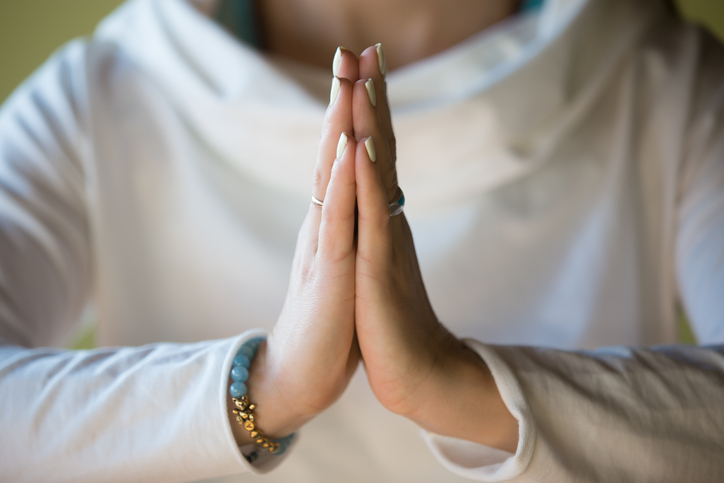I think it’s time to really explain the true meaning of Namaste. Namaste is one of the most widely used Hindu phrases. It has its roots in Sanskrit, an ancient language that was spoken in India thousands of years ago and became a sacred language for Hindus.
The word Namaste derives from two different Sanskrit words: ‘Nama‘ which means bow and ‘te‘ which means ‘to you‘. Hence, the literal meaning of ‘Namaste‘ is “I bow to you.”
When spoken it sounds like this: “Nah-mah-stay” or “Nah-mahs-tay.”
In Hindu culture, Namaste is used as a ritual greeting from one person to the other. It is a respectful greeting, which acknowledges the divinity within each person.
In yoga, Namaste is used before and/or after a posture or class to acknowledge the inner light within each of us. It also means that we respect ourselves enough to take responsibility for our own actions. In addition, it reminds us that we cannot expect others to respect us if we don’t respect ourselves.
In many Hindu temples, Namaste is used in place of “hello.” It acts as both a greeting and a farewell.
When someone says ‘Namaste’ to you it usually means one or more of the following: You have a light within you that I recognize and honor. May the divine light within you be honored. I recognize and honor the divinity within myself. I am pleased to meet you (or see you again).
Namaste can also mean goodbye or farewell, depending on how it is said. When someone says ‘Namaste’ to you as they are leaving, it usually means “I honor the divinity within you and I wish you well on your journey.”
How to say Namaste:
In English, Namaste is often said as both a greeting and a farewell. It can be used as a respectful way to greet someone. When speaking fluently in another language, it is common for native speakers to use the native pronunciation of the phrase.
Ways to say Namaste:
Namaskar (Hindi), namaskaram (Tamil), Namo (Gujarati)
When you meet someone for the first time or after a long time, you can say “Namaste” as a simple greeting. It is also a respectful way to greet someone.
If you’re a yoga teacher, this is the phrase you will most commonly use in class before getting into a posture and afterwards to close out the class.
